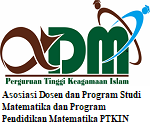Regional Economic Growth: A Spatial Durbin Model Approach
DOI:
https://doi.org/10.15642/mantik.2021.7.2.147-154Keywords:
Spatial Durbin Model, Spatial Autoregressive Model, Spatial Modeling, Spatial Autocorrelation, Economy GrowthAbstract
The purpose of this study is to determine the effect of spatial dependence on Gross Regional Domestic Product (GRDP) in Central Java Province. Spatial Durbin Model (SDM) is a regression model consisting of a spatial data structure which is the development of the Spatial Autoregressive Model (SAR). There is an additional spatial effect on the component of the independent variable that is not included in the SAR model or commonly referred to as an indirect effect on the independent variable. This indicates that SDM has advantages compared to SAR because there are spatial effects on the dependent and independent variables, the spatial weighted matrix used in this study is row-normalized binary contiguity. The data used in this study is sourced from the Central Java Statistics Agency (BPS) in 2019 for 35 districts and cities, which GRDP as the dependent variable, labor, human resources, and road infrastructure as independent variables. Based on the results of the analysis, the AIC value shows that SDM is significantly better than the ordinary least square (OLS) and SAR models. SDM results show that human resources have a positive sign and a direct effect of 88.5 percent and an indirect effect of 13.1 percent. In addition, the labor variable has an indirect effect on GRDP of 22.2 percent.
Downloads
References
N. Feriyanto, “Determinant of gross regional domestic product (GRDP) in Yogyakarta special province,” Econ. J. Emerg. Mark., vol. 6, no. 2, pp. 131–140, Oct. 2014, doi: 10.20885/ejem.vol6.iss2.art6.
M. Egerer, E. Langmantel, and M. Zimmer, “Gross Domestic Product,” in Regional Assessment of Global Change Impacts, Cham: Springer International Publishing, 2016, pp. 147–152.
R. K. Pace, J. P. LeSage, and S. Zhu, “Spatial Dependence in Regressors and its Effect on Estimator Performance,” SSRN Electron. J., 2011, DOI: 10.2139/ssrn.1801241.
A. Tientao, D. Legros, and M. C. Pichery, “Technology spillover and TFP growth: A spatial Durbin model,” Int. Econ., Apr. 2015, DOI: 10.1016/j.inteco.2015.04.004.
N. Yu, M. de Jong, S. Storm, and J. Mi, “Spatial spillover effects of transport infrastructure: evidence from Chinese regions,” J. Transp. Geogr., vol. 28, pp. 56–66, Apr. 2013, DOI: 10.1016/j.jtrangeo.2012.10.009.
P. Arbués, J. F. Baños, and M. Mayor, “The spatial productivity of transportation infrastructure,” Transp. Res. Part A Policy Pract., vol. 75, pp. 166–177, May 2015, DOI: 10.1016/j.tra.2015.03.010.
J. Li, J. Wen, and B. Jiang, “Spatial Spillover Effects of Transport Infrastructure in Chinese New Silk Road Economic Belt,” Int. J. e-Navigation Marit. Econ., vol. 6, pp. 1–8, 2017, DOI: 10.1016/j.enavi.2017.05.001.
A. Karim, D. S. Sarra, R. Wasono, T. W. Utami, and Toheri, “Spatial modeling for rice production analysis in Central Java province Indonesia,” J. Phys. Conf. Ser., vol. 1217, no. 1, p. 012113, May 2019, DOI: 10.1088/1742-6596/1217/1/012113.
R. Wasono, A. Karim, M. Y. Darsyah, and Suwardi, “Budgeting school operational assistance in Central Java using three spatial process modeling,” J. Phys. Conf. Ser., vol. 1217, no. 1, p. 012112, May 2019, DOI: 10.1088/1742-6596/1217/1/012112.
L. Anselin, “Lagrange multiplier test diagnostics for spatial dependence and spatial heterogeneity,” Geogr. Anal., vol. 20, no. 1, pp. 1–17, 1988, doi: 10.1111/j.1538-4632.1988.tb00159.x.
H. de-G. Acquah, “On the Comparison of Akaike Information Criterion and Consistent Akaike Information Criterion in Selection of an Asymmetric Price Relationship: Bootstrap Simulation Results,” AGRIS on-line Pap. Econ. Informatics, vol. 5, no. 1, pp. 3–9, Mar. 2013, DOI: 1804-1930.
A. Karim, A. Faturohman, S. Suhartono, D. D. Prastyo, and B. Manfaat, “Regression Models for Spatial Data: An Example from Gross Domestic Regional Bruto in Province Central Java,” J. Ekon. Pembang. Kaji. Masal. Ekon. dan Pembang., vol. 18, no. 2, p. 213, Dec. 2017, doi: 10.23917/jep.v18i2.4660.
A. Karim, Suhartono, and D. D. Prastyo, “Spatial spillover effect of transportation infrastructure on regional growth,” Econ. Reg., vol. 16, no. 3, pp. 911–920, 2020, DOI: 10.17059/ekon.reg.2020-3-18.
J. P. LeSage and R. K. Pace, “Spatial econometric modeling of origin-destination flows,” J. Reg. Sci., vol. 48, no. 5, pp. 941–967, 2008, doi: 10.1111/j.1467-9787.2008.00573.x.
M. A. Márquez, J. Ramajo, and G. J. D. Hewings, “A Spatio-temporal econometric model of regional growth in Spain,” J. Geogr. Syst., vol. 12, no. 2, pp. 207–226, Jun. 2010, DOI: 10.1007/s10109-010-0119-3.
P. CANTOS, M. GUMBAU‐ALBERT, and J. MAUDOS, “Transport infrastructures, spillover effects, and regional growth: evidence of the Spanish case,” Transp. Rev., vol. 25, no. 1, pp. 25–50, Jan. 2005, DOI: 10.1080/014416410001676852.
Downloads
Published
How to Cite
Issue
Section
License
- Authors retain copyright and grant the journal right of first publication with the work simultaneously licensed under a Creative Commons License that allows others to share the work with an acknowledgment of the work's authorship and initial publication in this journal.
- Authors are able to enter into separate, additional contractual arrangements for the non-exclusive distribution of the journal's published version of the work (e.g., post it to an institutional repository or publish it in a book), with an acknowledgment of its initial publication in this journal.
- Authors are permitted and encouraged to post their work online (e.g., in institutional repositories or on their website) prior to and during the submission process, as it can lead to productive exchanges, as well as earlier and greater citation of published work







.png)




